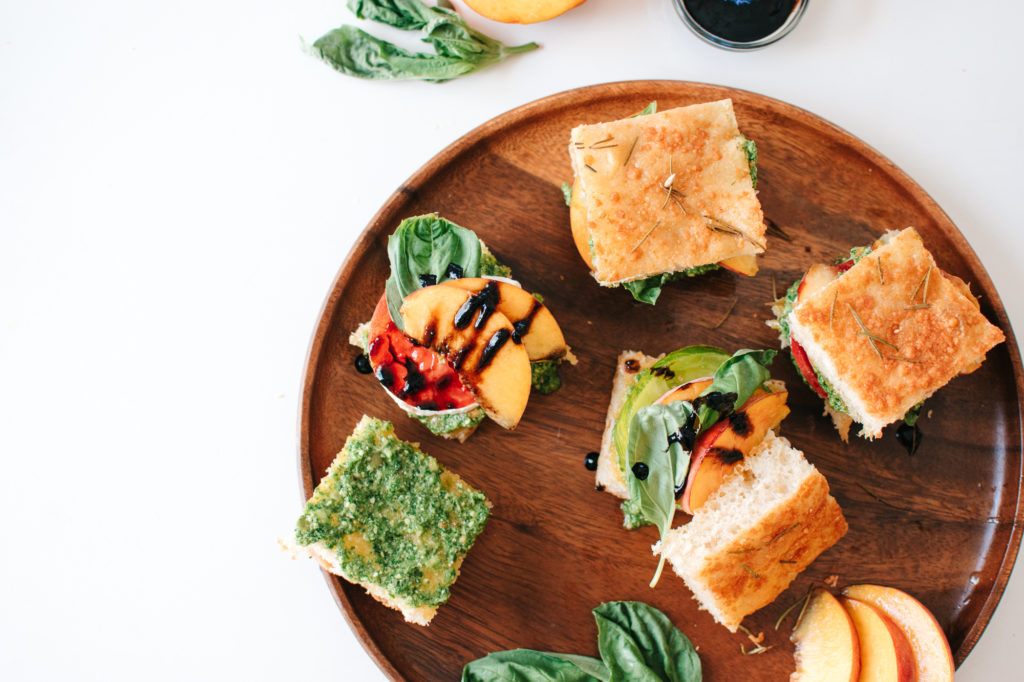
The day Alton Sterling was murdered, I was supposed to post an image of ice cream cones spelling out the word “goals” with a line of html code on Instagram. It was part of an influencer campaign to illustrate how code has empowered people across the internet, and, in the weeks leading up, “goals” seemed a cutesy yet appropriate sentiment. And then Sterling was murdered. I postponed the post. I sat and watched, horrified, as, over the next hours, a growing business-as-usual silence spread over the industry for which I typically feel so much pride, my industry. People—”influencers”—continued to post their smoothies and tacos, not saying a word about the cataclysmic social and racial crisis we were in. I was silent that day, too. I, like so many, was speechless.
The next day, Philando Castile was murdered in front of his girlfriend and her child. And the day after that, five police officers were killed (along with the shooter) in the midst of a peaceful Black Lives Matter protest in Dallas. By Thursday, July 7, 2016, to say the United States was not in the midst of a crisis was to willfully ignore what was writ large in print, in video, and in the blood of those who lost their lives across the country. Of course, to Black lives in the US, this crisis wasn’t news. This kind of institutionalized racism was simply life. How could my singular, privileged white voice dare to speak out in the midst of such horror? What could I possibly say that would be of value?
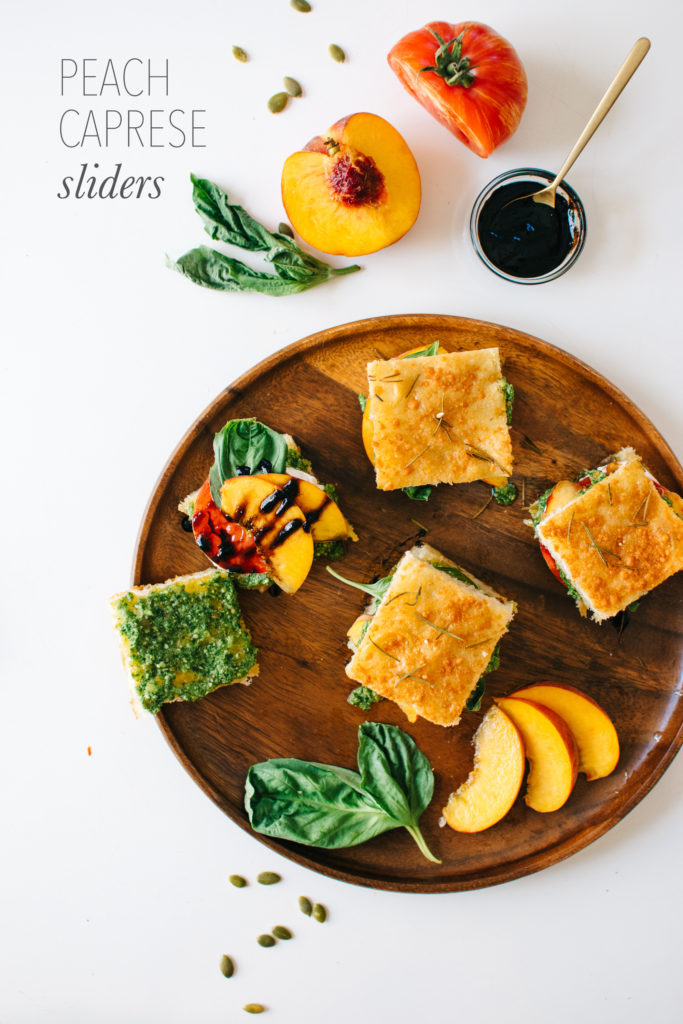
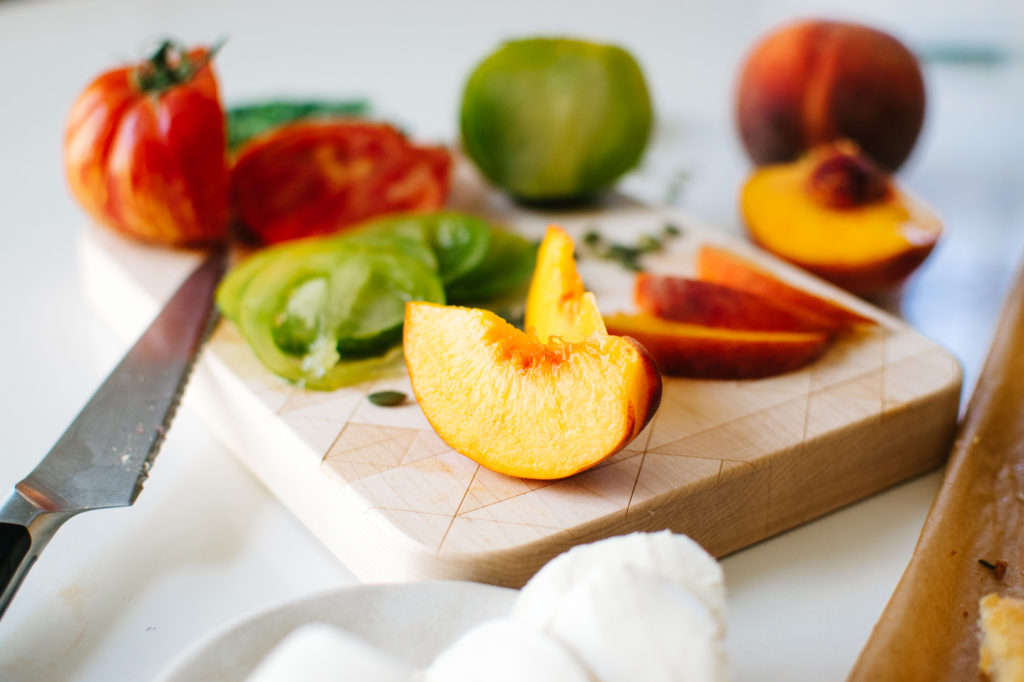
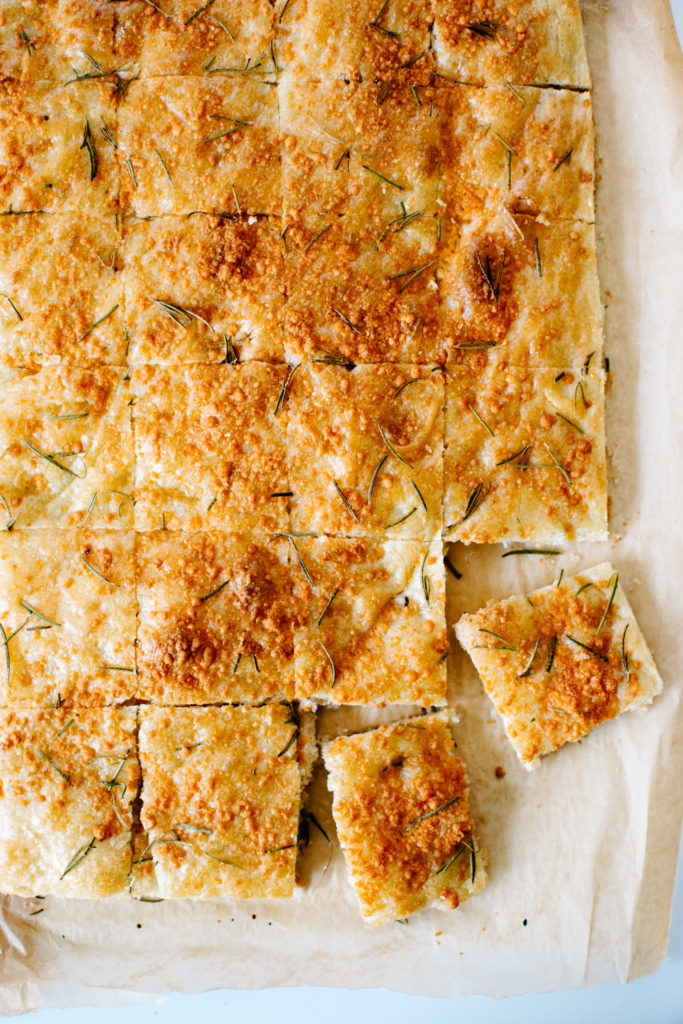
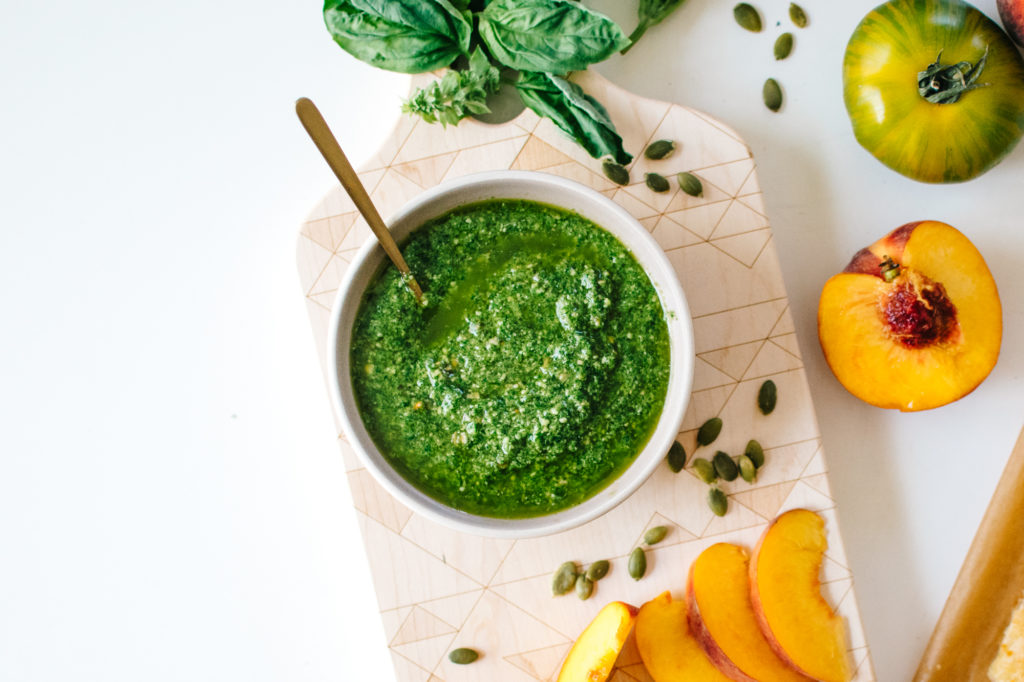
I began by listening, by reading, by watching. I began by asking myself to look deeply. To examine my whiteness. My white privilege. The way in which the privilege given to me freely at birth has meant, in equal measure, the oppression of others.
On Facebook today, author Rebecca Walker shared a warning Albert Einstein issued to Americans in 1946, after living in the US for some time. Einstein called the prejudice Americans held against anyone who was not white—yet particularly against African Americans—a “fatal misconception”. He wrote, “The more I feel an American, the more this situation pains me. I can escape the feeling of complicity in it only by speaking out.”
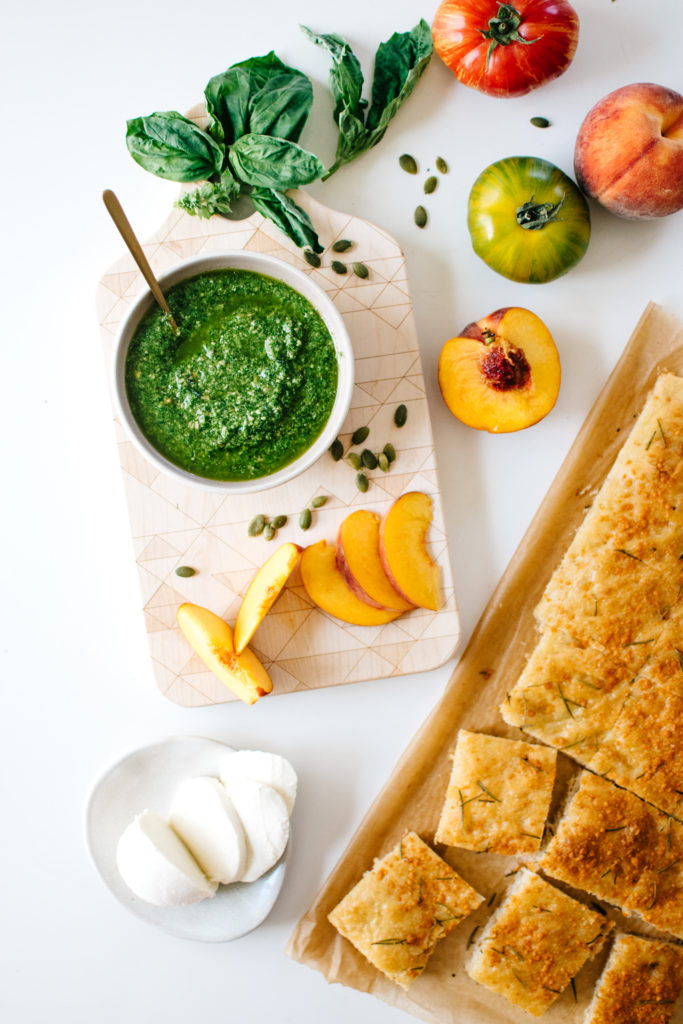
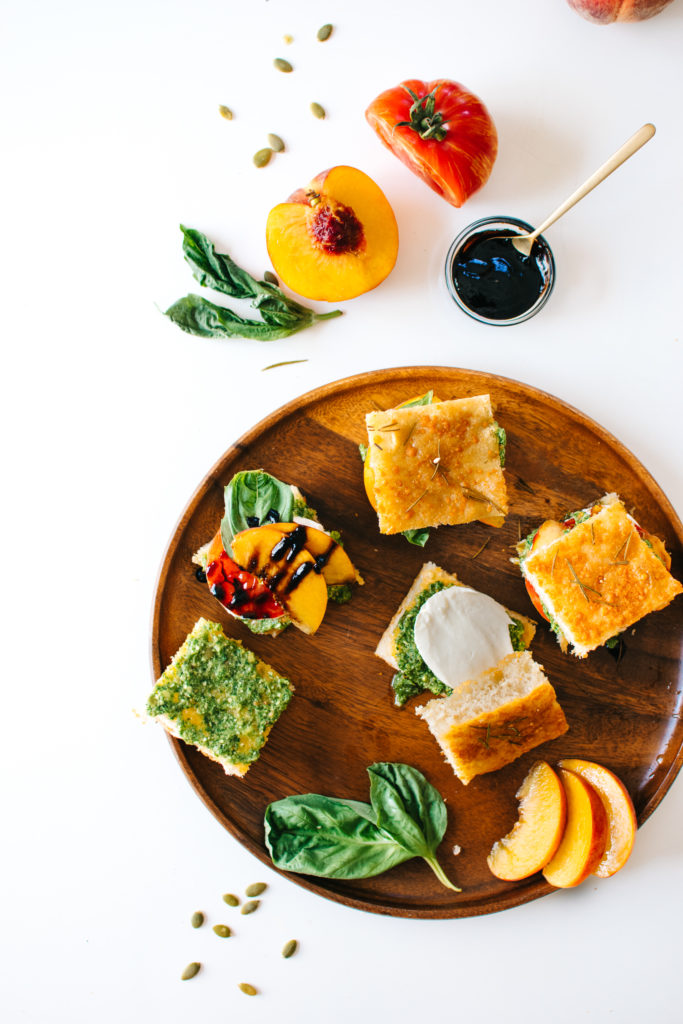
Seventy years have passed since Einstein wrote this warning, and a few things have changed. Yet many have not—the root of this fatal misconception is still impacted in our nation’s psyche. Like him, I feel the only way I can change this is to examine my own complicity, conscious and unconscious, as a white person in America.
On Medium.com, Chaédria LaBouvier wrote:
Whiteness is not a race so much as it is a position. And it — White supremacy — is insidious, it is toxic and it is murderous. And to say anything other than that truth would be a lie to comfort the most narcissistic in our nation.
It is not enough to have a conversation about what can Black people do. We have done enough. …
America must do better, but we are all dying until White people, particularly White men want more from themselves. We are literally dying from their low expectations of their humanity and potential. We are dying from their criminal, moral mediocrity.
The week before these murders occurred, during his epic acceptance speech at the BET Awards, Jesse Williams asserted: “The burden of the brutalized is not to comfort the bystander.” I know that my sentiments, my prayers, my compassion—even my passive empathy—for these atrocities of institutionalized racism are not enough. Instead, I must be willing to do the kind of work LaBouvier demands.
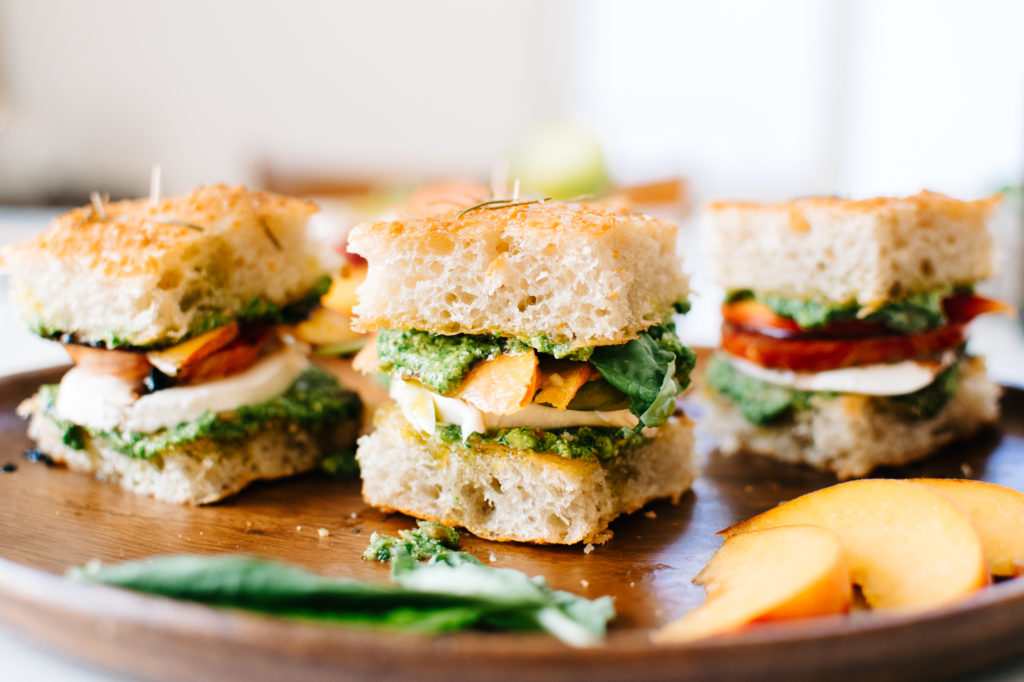
In “Waking Up White: A Resource for White Folks”, Jasmine Banks said of the work required of white people in this moment, “This form of active empathy is an exchange of power. YOU CANNOT DO THIS WORK IF YOU DO NOT WANT GIVE UP SOMETHING.“
For me, this begins with giving up the privilege of remaining silent because I am safe because I am white. It begins with having conversations about white privilege and institutionalized racism and Black Lives Matter with the people in my family, with my friends, with my colleagues. And, finally, it begins with my using my platform, here and on social media, to bridge that boundary between the private and the public, to speak up for the kind of world in which I want to live.
Many in my industry feel that our work and our beliefs should be kept separate. I respect them, as I always have, and will continue to. And yet, to what end do we separate what we believe from what we do? I cannot, in any configuration of business and life practice, hold myself to a standard that strips me of my voice when it matters most.
I believe in all of us—I believe in you—far more than that.
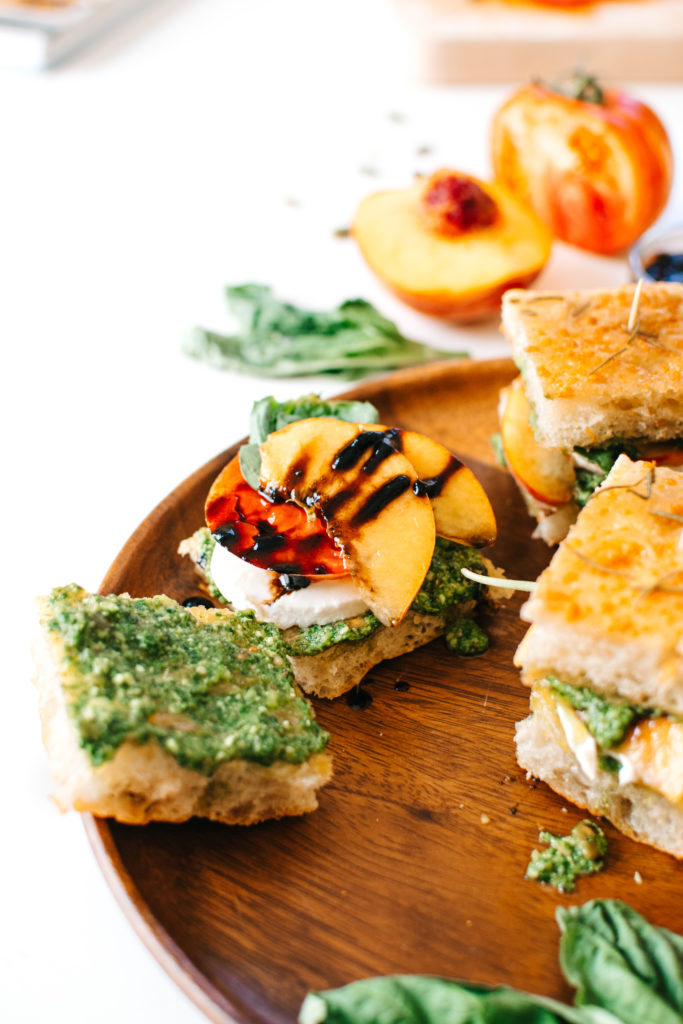
Yesterday, poet and activist Sara Brickman tweeted,
When shootings like #PhilandoCastile and #AltonSterling take place, I worry about my role: When is is right to listen? When to speak?
I know that I must always be listening and always be speaking. The two are inextricable. If I step in front of Black friends and voices
I HAVE FAILED. If I remain silent or only share Black voices without any thinking or speaking of my own, I HAVE FAILED. If I only speak to
POC when Black death happens, and not to fellow white people and family, I HAVE FAILED. And I will fail, again and again.
But this isn’t about my individual failings. This is about ENDING BLACK GENOCIDE. This is about ending all forms of racism and oppression.
So yes, I may stumble in my speaking out, but I cannot remain silent. In the kitchen, in the bedroom, on the phone, on social media, I will speak, I will break the silence. I do not have to have the answers. I only have to care about the questions. I only have to care.
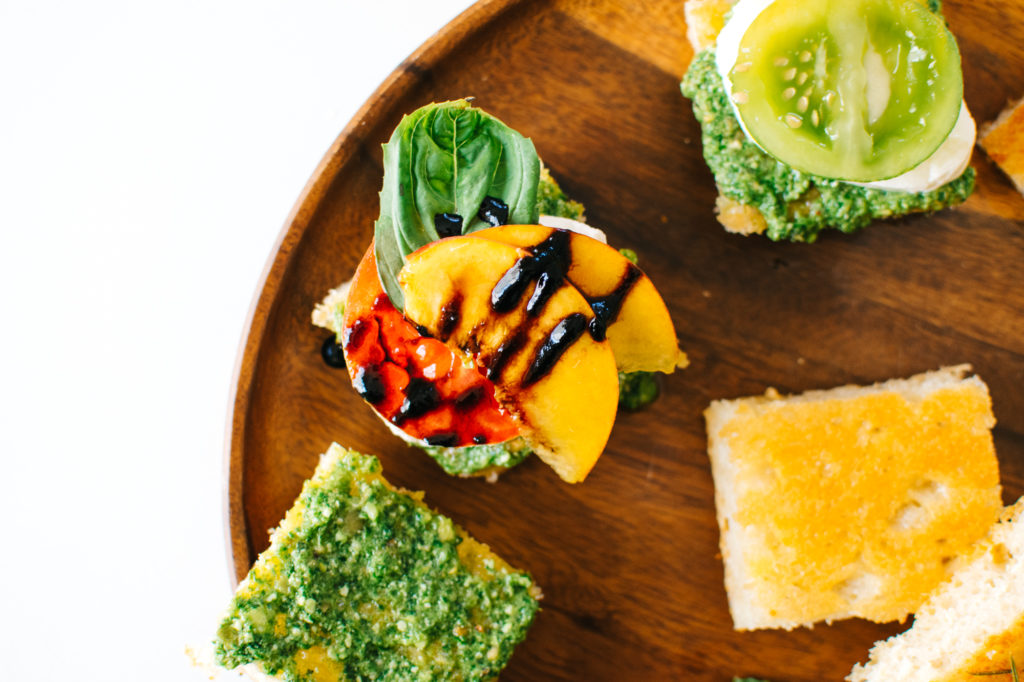
And as I spend so much of my life in the kitchen, I will continue to care through the food I make, because what is food, a meal, a gathering of people, if not the perfect opportunity to ask ourselves how we can do better, care better? These peach caprese sliders are my own small variation from Jonathan Melendez’s summertime treasure of a book, The Slider Effect. The book is a trove full of small sandwich recipes ideal for sharing, for thinking, for easing into potentially uncomfortable conversations.
We can do better as we bake Melendez’s pillowy, olive oil-rich rosemary parmesan focaccia. We can do better as we blend his pepper arugula pumpkin seed pesto. We can do better as we feed the ones we love. As we talk to them. As we care.
Read on for the recipe, and get your own copy asap.
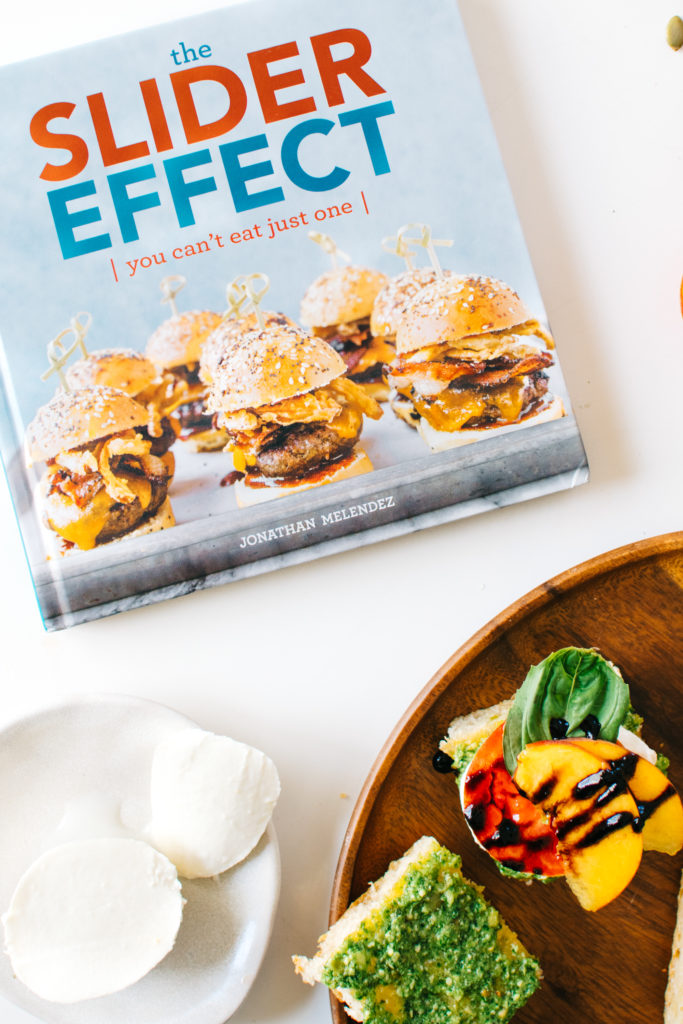
Recipe printed with permission of the author and Andrews McMeal Publishing, copyright 2016.
PEACH CAPRESE SLIDERS FROM THE SLIDER EFFECT
Ingredients
rosemary parmesan focaccia
- 1 cup warm water about 110ºF
- 2 ¼ teaspoons (¼-ounce packet) active dry yeast
- 2 teaspoons honey
- 2 ½ cups all-purpose flour
- 2 teaspoons salt
- ¼ cup plus 2 tablespoons olive oil for greasing baking sheet
- 2 tablespoons chopped fresh rosemary
- ¼ cup grated Parmesan cheese
arugula pumpkin seed pesto
- 2 cups packed fresh baby arugula
- 2 cloves small garlic peeled
- 2 tablespoons pumpkin seeds toasted
- ¼ cup grated Parmesan cheese
- 1 teaspoon finely grated lemon zest
- 1 tablespoon fresh lemon juice
- ½ cup extra-virgin olive oil
- Pinch of kosher salt
- Few grinds of fresh black pepper
peach caprese sliders
- 12 rosemary parmesan focaccia buns or store-bought ciabatta rolls
- arugula pumpkin seed pesto
- 1 (16-ounce) package fresh mozzarella sliced
- 3 medium vine-ripened or heirloom tomatoes, sliced
- 1 large ripe peach, thinly sliced (Kale & Caramel addition)
- ¼ cup sliced fresh basil
- ¼ cup balsamic vinegar
- ¼ cup extra-virgin olive oil
- ½ teaspoon kosher salt
- ¼ teaspoon coarsely ground black pepper
Instructions
Make the rosemary parmesan focaccia.
- In a small bowl, gently stir the warm water, yeast, and honey. Let rest in a warm spot until foamy, about 10 minutes. If the yeast doesn’t foam up, discard it and start over.
- In the bowl of a stand mixer fitted with the paddle attachment, combine the flour, salt, ¼ cup of the olive oil, and yeast mixture until the dough begins to come together. Switch to the dough hook. Knead the dough on high for 5 to 7 minutes, until it becomes soft and somewhat elastic.
- Transfer the dough to a well-floured work surface and knead a few times by hand. Oil a bowl well. Shape the dough into a bowl and place in the bowl, turning over to coat both sides. Cover loosely with plastic wrap and a damp kitchen towel. Let rest in a warm spot until doubled in size, about 1 hour.
- Line a baking sheet with parchment paper and drizzle with the remaining 2 tablespoons olive oil. Transfer the dough to the prepared baking sheet and stretch out with your hands to fully cover the baking sheet with dough. Using your fingers, make indentations all across the top. Cover with plastic wrap and a damp kitchen towel and let rest in a warm spot for another hour.
- Preheat the oven to 400ºSprinkle the bread evenly over the top with the rosemary and Parmesan. Bake the focaccia until golden brown on top, 20 to 25 minutes. Remove from the oven and let cool down before cutting. Cut into 16 squares and use immediately. Any leftovers can be stored in an airtight container at room temperature for up to 3 days.
Make the arugula pumpkin seed pesto.
- Place the arugula, garlic, pumpkin seeds, Parmesan, and lemon zest and juice in a food processor and pulse a few times until roughly chopped. Use a rubber spatula to scrape down the sides and bottom of the bowl between pulses, to ensure that everything is evenly chopped.
- With the machine running, slowly drizzle in the olive oil in a steady stream. Process for about 30 seconds. Season with salt and pepper and pulse once more. Give the pesto a taste and adjust the seasonings if needed. Transfer to an airtight container, cover with plastic wrap, seal with lid, and store in the fridge until ready to use. Can be kept, chilled, for up to 4 days.
Make the caprese sliders.
- Split the buns in half (or, if focaccia is thin, use two square pieceand spread each half with pesto. Place a slice of mozzarella, tomato, peach, and a bit of basil onto the bottom half of the buns.
- Drizzle each with the vinegar and olive oil and sprinkle with a bit of salt and black pepper. Sandwich both halves together and skewer with a long toothpick. Serve immediately.



